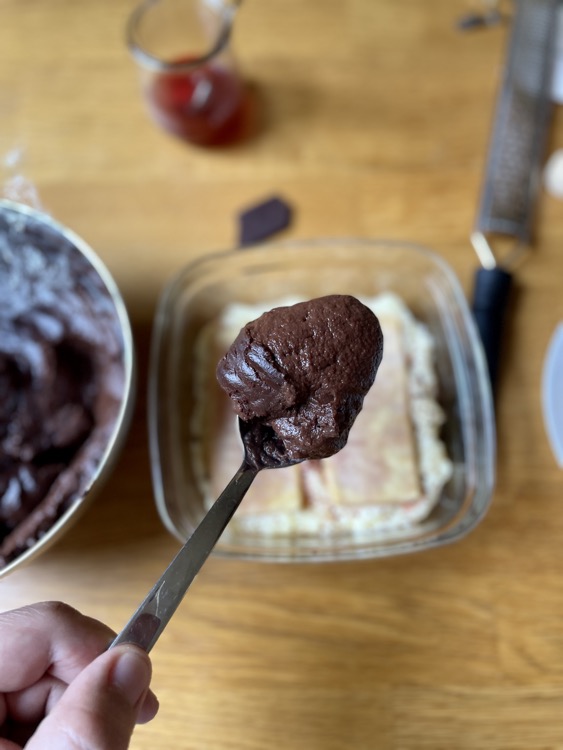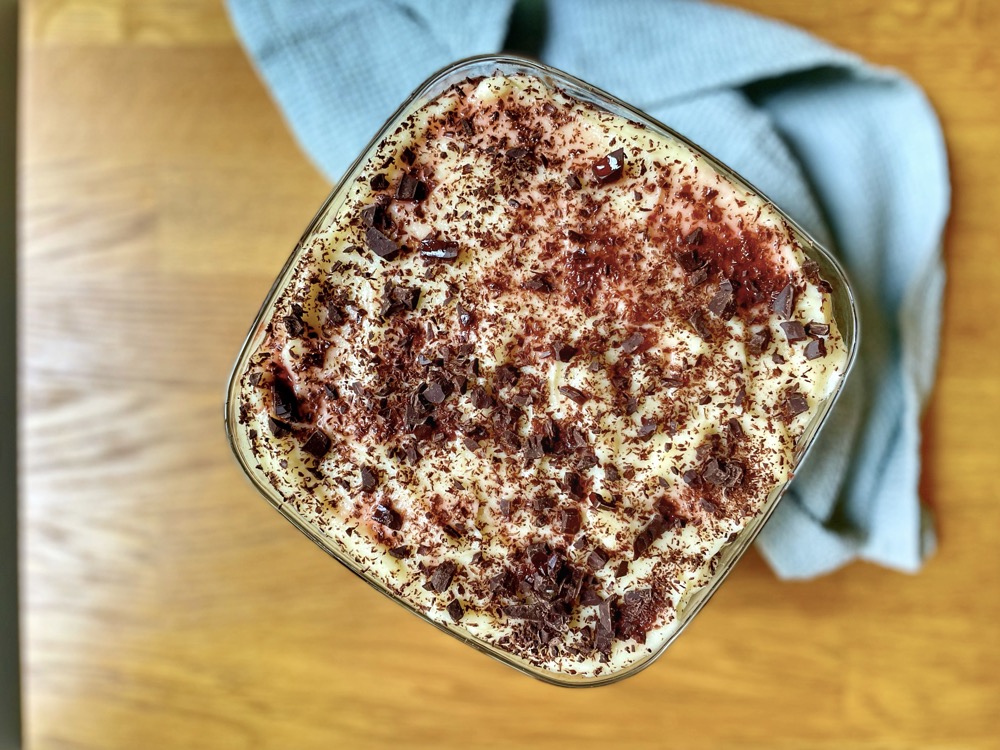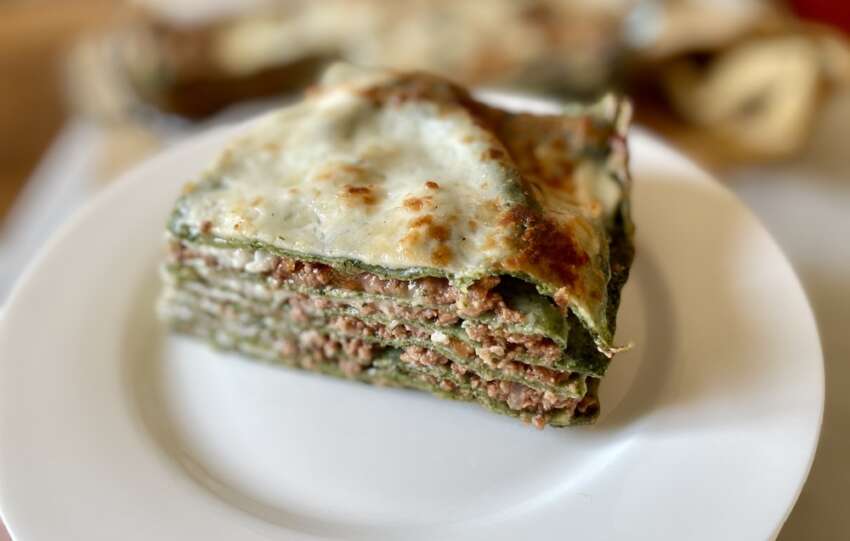Zuppa Inglese cake (English Soup) was one of the spoon desserts that nonna made most often. It was one of the Sunday lunch desserts.
It was such a simple recipe for her that never, not once, did she make it for Easter or Christmas. Good thing, since I wouldn’t say I liked it.
Besides the Vera Torta cake of Imola, brushed generously with an alcoholic mixture, I was not too fond of liquor desserts. Neither did Tiramisu.
I had definite tastes supported by a tenacious determination.
As an adult, little by little, I am catching up.

The Zuppa Inglese cake, an Italian disputed recipe.
The origin of the recipe codified since the 19th century presents some doubt.
In Italy, several regions claim authorship of Zuppa Inglese cake.
But why does the name contain a reference to Britain? It contains valuable indication.
Think of the word hamburger, which comes from Hamburg, Germany.
The ground steak was imported to America by European immigrants from Germany just as it came to Italy with the Swiss from the German Canton hence the word Italians use to call burger (Swiss).
But back to English Soup and the reference to Britain contained in the name.
A few decades ago, the sale at a Christie’s auction of the recipe book of the wife of Oliver Cromwell, the man who briefly turned the British Kingdom into a Protectorate (his own) disguised as a Republic in the 1600s, put a point of clarity.
In the cookbook, Mrs. Cromwell mentions a trifle recipe, the Zuppa Inglese cake, which she made without chocolate cream. The dessert originated in UK well before 1600.
In Britain, Zuppa Inglese is the Trifle: a layered dessert that may look like soup.
The dessert arrived in Italy in the 1500s, following dignitaries who had stayed at the English court. It was certainly the case at the Este court in Ferrara (Emilia), where cooks introduced the use of the ciambella softened with infusions or liqueurs between creams.
The scent of Alchermes leads to Florence, where the friars of Santa Maria Novella, as early as the 1500s, were known to produce this liqueur.
These two traces confirm that during the 16th century, Zuppa Inglese cake spread in Italy, starting in Tuscany and Emilia and, from there, in neighboring regions.

Zuppa Inglese cale with my home recipe
As a child, I spent many hours in the kitchen with Grandma.
The presence on the table of a bottle of red liquor announced the preparation of Zuppa Inglese cake.
After making the custard, Grandma would mix one part with bitter cocoa, creating the two creams. She would set the bowls to cool and do other things in the meantime.
Meanwhile, I would clean the dirty cream bowls until someone said stop. Unfortunately, dealing with busybodies is one of the sad facts of life.
At that point, I would return to my work corner, among old magazines, recycled sheets, plastic scissors, and paints, until it was time to cut the ciambella, not too thick, not too thin.
Grandma always used ciambella as the base for making the dessert, sometimes ladyfinger cookies, and rarely sponge cake. She did not use much liquor to avoid making the sweet cloying.
And on top of the yellow cream, he always grated dark chocolate, even in the middle layer. Upon cutting, I remember the firm cream and the alternating colors. I loved the smell of the Alchermes, but after a teaspoon of tasting, I would turn my nose up at it, preferring to eat a cup of plain custard.
I made the cake using grandma’s recipe.
I used a little liquor, made thick cream, and sprinkled lots of grated chocolate.
The soft texture envelops the palate before melting in the mouth in an explosion of flavors and aromas. How I wish I could tell her that I like it now!
Buona cucina, Monica
Stay in the know!
To receive unpublished recipes, tips, and food stories, sign up for the Tortellini&CO newsletter. You can disable it anytime.
Keep in Touch
If you like, follow me on Instagram, Pinterest and Facebook.

Food tips
For this recipe, to make the custard, I use whole eggs, not only yolks, so that there are no leftovers and the custard is thicker.
Between layers of custard, you can use, in addition to the donut, ladyfingers, sponge cake. Whatever you choose, dunk in Alchermes but not too much. Don’t overdo it, or the cake will taste like liquor.
You can compose English Soup in single-serving bowls.
Zuppa Inglese cake recipe
serves 6
square glass mold, 15 cm
List of the Ingredients
granulated sugar, 100g
flour, 100g
4 whole eggs
milk, 1 liter
bitter cocoa, 30 g
grated zest of 1/2 lemon
Alchermes liqueur, to taste
sponge cake or ladyfingers or leftover doughnut cut into slices to taste
100 g dark chocolate
Directions
In a saucepan, mix, with a hand whisk, eggs and sugar.
Add the sifted flour, still stirring with the whisk, and then slowly, and still stirring, pour the room-temperature milk into the mixture.
Add grated lemon zest and put the pan on the stove. Bring to a boil, and when stirring meets resistance and the cream begins to pull away from the sides of the pan, remove from the heat.
From the custard take about 1/3 and add the sifted cocoa, mix and let the creams cool completely.
To prevent the formation of a thick film, which then forms lumps in the cream, place food-grade cling film on the surface, in contact with the cream, or rub a piece of butter on it.
If you use sponge or bundt cakes, cut slices to a height of 1/2 cm.
In a dish, pour a few tablespoons of Alchermes and wet the donut/biscuits/sponge cake that will form the base of the dessert. Soak but not too much and line the bottom of the mold.
Pour a layer of yellow cream over the base, make another thin layer of soaked donut (but not too much). Grate some dark chocolate.
Add all the chocolate cream, top with more doughnut slices soaked in Alchermes, and finish with a layer of yellow cream.
On the last layer pour a few drops of Alchermes and finish with more grated dark chocolate.







